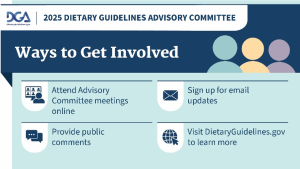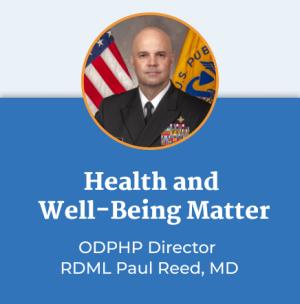Dietary Guidelines
The Dietary Guidelines for Americans (Dietary Guidelines) provides advice on what to eat and drink to meet nutrient needs, promote health, and prevent disease. It is developed and written for a professional audience, including policymakers, healthcare providers, nutrition educators, and federal nutrition program operators. The U.S. Departments of Health and Human Services (HHS) and Agriculture (USDA) work together to update and release the Dietary Guidelines every five years. Each edition of the Dietary Guidelines reflects the current body of nutrition science. Check out the blog posts below for the latest news about the Dietary Guidelines.



